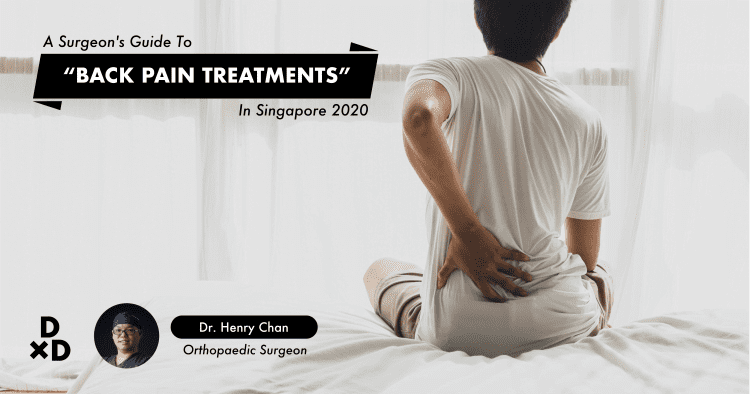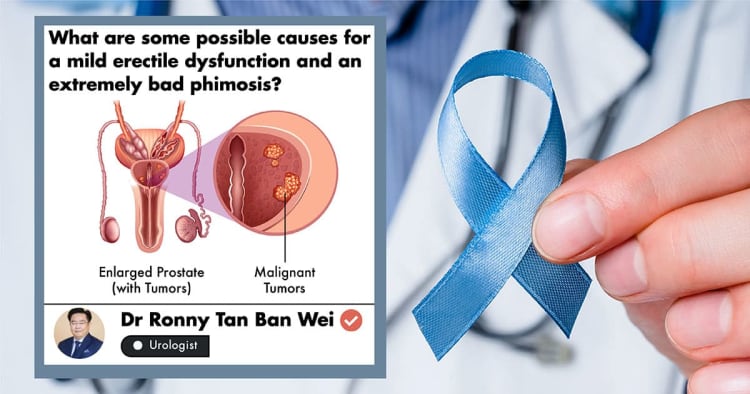Have you ever experienced a sudden, shooting pain along your arm that feels like it is triggering every single pain receptor in your body?
You could have a frozen shoulder!
What is a frozen shoulder?
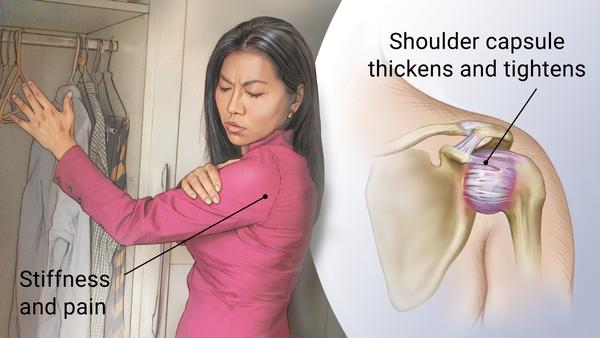
A frozen shoulder is a condition when movement surrounding your shoulder is restricted. It's often accompanied by severe and constant pain.
Your shoulder is made up of three bones that form a ball-and-socket joint. The shoulder capsule surrounds your shoulder joint and holds everything together.
With a frozen shoulder, the capsule becomes so thick and tight that it becomes hard to move.
It’s not clear why some people develop it, but certain groups are more at risk…..
Are you at risk of getting a frozen shoulder?
The average individual who develops a frozen shoulder is often:
- Female
- In their 50’s
- Diagnosed with diabetes, or suffering from high blood pressure/thyroid disease
Younger individuals can also develop a frozen shoulder, particularly after a traumatic injury. This could be as simple as falling off a bike (yikes) to a complete tear of a rotator cuff muscle (double yikes).
The shoulder starts to become painful/stiffen soon after the injury.
How does a frozen shoulder progress?
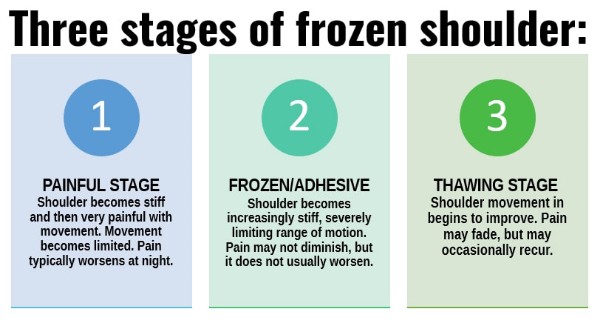
There are 3 distinct phases to the condition:
Stage 1 – “freezing” or the painful phase
The shoulder becomes progressively more painful, starting with a constant dull ache, and moving to a full-on 10/10 pain with sudden movements.
Often, it disrupts proper sleep, particularly when lying on the affected shoulder.
Stage 2 – “frozen” or stiff phase
As the pain starts to ease, there is a stiffening/frozen phase when movement is limited. The time taken to develop between phases are variable.
For many, they find the frozen phase more troubling than the painful phase, as the limited movement and impaired function affects their work, home life and exercise significantly.
Even simple activities such as brushing/tying your hair, fastening a bra strap or removing items from your back pocket can become impossible to do.
Stage 3 – “thawing” or recovery phase
Stage 3 is when pain starts to settle and movement improves. Improvements usually arrive only in small increments. Inward rotation of the arm (such as for fastening a bra strap) recovers last!
The total time taken to recovery varies according to the individual. This can take from 24 to 36 months.
How is a frozen shoulder diagnosed?

Doctors can usually diagnose a frozen shoulder based on your history and examination findings.
However, there are 2 investigations that can help to confirm this:
- A shoulder X-Ray – this identifies whether there is any osteoarthritis that could be limiting movement
- A shoulder ultrasound – this looks for any rotator cuff tears that might be causing the pain and limited movement
An MRI scan is not necessary for supporting a clinical diagnosis, although it might be important prior to possible surgical treatment.
How do doctors treat a frozen shoulder?
Doctors prescribe treatment that helps to manage the symptoms of a frozen shoulder, while also dealing with the underlying cause.
The treatment varies depending on which "phase" you are in.
Broadly, treatment is classified into non-surgical (conservative) or surgical methods.
Non-surgical treatment for frozen shoulders
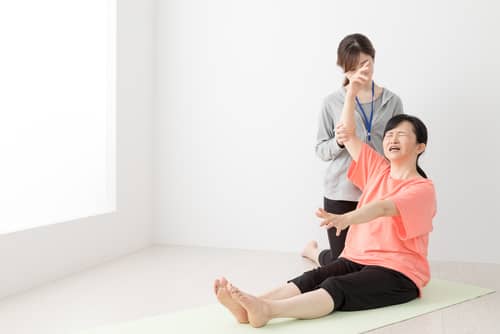
1. Physiotherapy
This is an essential element of any treatment for frozen shoulders.
The physiotherapy team will provide advice on exercises which help to:
- Maintain strength
- Maintain your range of movement
I'm often asked how often one has to attend rehabilitation sessions.
The general consensus is that the more activities you do yourself at home, the less frequently you will need to attend these sessions.
Try to perform the exercises given to you for at least 3 months before moving onto other treatments. Subsequently, physiotherapists will tailor treatments according to your response.
2. Steroid injections
Steroid injections are useful if pain is an overriding issue, and there's little improvement with physiotherapy.
The aim of the injection is to decrease inflammation around your joint, which will also cause pain to subside.
While this does not resolve the underlying problem, it does allow physiotherapy exercises to be undertaken with less pain.
The risks of steroid injections include:
- Infection of the shoulder joint
- Pain/bruising during the procedure
- Flare up of pain-related symptoms once the anaesthetic wears off (usually resolves within a few days)
Other common side effects of a steroid injection can be temporary fluctuations in blood sugars for diabetic patients, and spotting in post-menopausal women.
**3. Hydro-dilatation
**
As the name implies, this procedure aims to “dilate” or “expand” the joint using a large volume of fluid. It involves an injection directly into your shoulder under ultrasound guidance.
Steroid, a local anaesthetic and saline are injected under pressure to produce the dilation and break up areas where the capsule has turned stiff. The procedure takes about 30 minutes in total, and you'll be able to go home the same day.
Post-procedure, it's recommended to rest for 24 hours, before commencing on a prescribed series of exercises.
There will also be a series of follow-up appointments with your specialist to optimise outcomes.
The risks from hydro-dilation are the same as after a conventional steroid injection. In addition, your shoulder can feel swollen due to the fluid injected. This usually resolves after a few days.
Surgical treatment for frozen shoulders
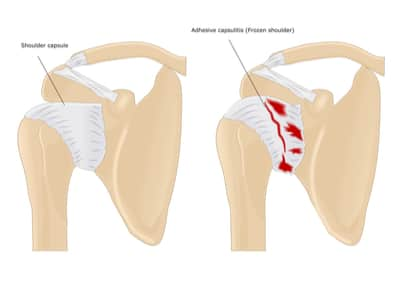
If the above non-surgical options fail to improve your symptoms, a surgical approach may be required.
There are 2 main procedures undertaken:
**1. Manipulation under anaesthesia (MUA)
**As the name implies, you are given a general anaesthetic, before your surgeon moves your arm about the shoulder joint. The aim is to loosen your shoulder joint by “breaking” the adhesions that have formed.
This is the more traditional surgical approach in centres where arthroscopic (key-hole) surgery is not available. It's generally reserved for patients with significant restrictions in their movement.
**2. Arthroscopic capsular release
**In centres where arthroscopic surgery is available, this is the preferred surgical procedure.
Two small incisions are made around your shoulder joint to insert a camera and a probe.
Fluid is then pushed into the joint to expand it, after which areas of tightness and restriction are cut using precise instruments.
This procedure is minimally invasive, and the aim of this procedure is to speed up recovery by limiting further damage to the shoulder joint.
Do note that following both procedures, further rehabilitation will be required to optimise the outcome, and limit the recurrence of your problem.
On a final note, do note that it's also important to treat any underlying problems such as diabetes, thyroid disease and hypertension! This will all help to speed up your recovery from a frozen shoulder.
Dr Dinesh Sirisena is a Consultant in Sports Medicine at Khoo Teck Puat Hospital. He has specialist interests in shoulder, back and hip conditions, concussion management, medical education and ultrasound guided intervention to minimise surgical intervention. Dr Dinesh has worked across a range of sports, which includes professional football, premiership rugby, British Gymnastics, Mixed Martial Arts, Wimbledon Tennis, British Athletics and the London Olympic and Paralympic Games. His most recent experience as a team doctor was with Team Singapore at the 2017 SEA Games. In his down time he enjoys cycling, golf and playing the ukulele!


